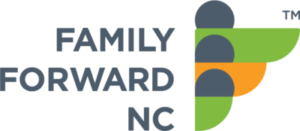Parental leave is paid leave for the birth, adoption, or acceptance of foster placement of a child that is separate from vacation or sick leave.
Benefits to Employers
- Increases or does not decrease productivity
- Improves recruitment
- Increases likelihood that new mothers will come back to work (and to same employer) and stay employed
- Increases likelihood that new fathers will stay employed
- Reduces turnover costs through increased retention
- Improves morale and job satisfaction
Benefits to Children
- Increases birthweight
- Reduces infant mortality
- Improves health care
- Increases well-baby care
- Increases immunization rates
- Supports child development
- Increases educational attainment
- Increases IQ
- Increases test scores
- Reduces behavioral/mental health problems
- Improves regular school attendance
- Reduces teen pregnancy rates
- Increases wages as adults
Benefits to Parents/Families
- Improves family incomes
- Increases initiation and length of breastfeeding
- Decreases maternal depression and stress
- Increases paternal engagement in caregiving
- Increases job satisfaction
- Builds healthier parent-child relationships
- Reduces wage gap between women and men
- Reduces wage gap between mothers and childless women
- Reduces stigma of taking leave
- Increases gender equity and women’s advancement at work
- Workers are more likely to remain in the workforce, increasing family economic security
Range of Practices in the United States
Though the number of employers offering paid parental leave has steadily increased over the last five years, only 14 percent of private sector workers and 17 percent of public sector workers have access to any paid leave following a birth, adoption, or foster placement.
For low-wage workers, the percentage is much lower — just four percent for workers in the lowest 10 percent income bracket. Access to leave also varies widely by industry. Thirty-seven percent of workers in the finance and insurance sectors have access to paid leave, but paid leave is available for only 19 percent of education and health care workers and six percent of restaurant and hospitality workers.
The United States is the only developed nation in the world and one of only a small handful of countries with no national paid leave policy. The other countries are Papua New Guinea, Suriname, and a few small South Pacific island countries.
For parents without paid leave, quitting their current job or leaving the workforce altogether is a real consideration.
Nearly one in three mothers (27 percent) and 10 percent of fathers who do not have access to paid parental leave plan to quit their job as soon as their child is born.
Fourteen percent of soon-to-be parents plan to quit their job for a new one with leave benefits.
